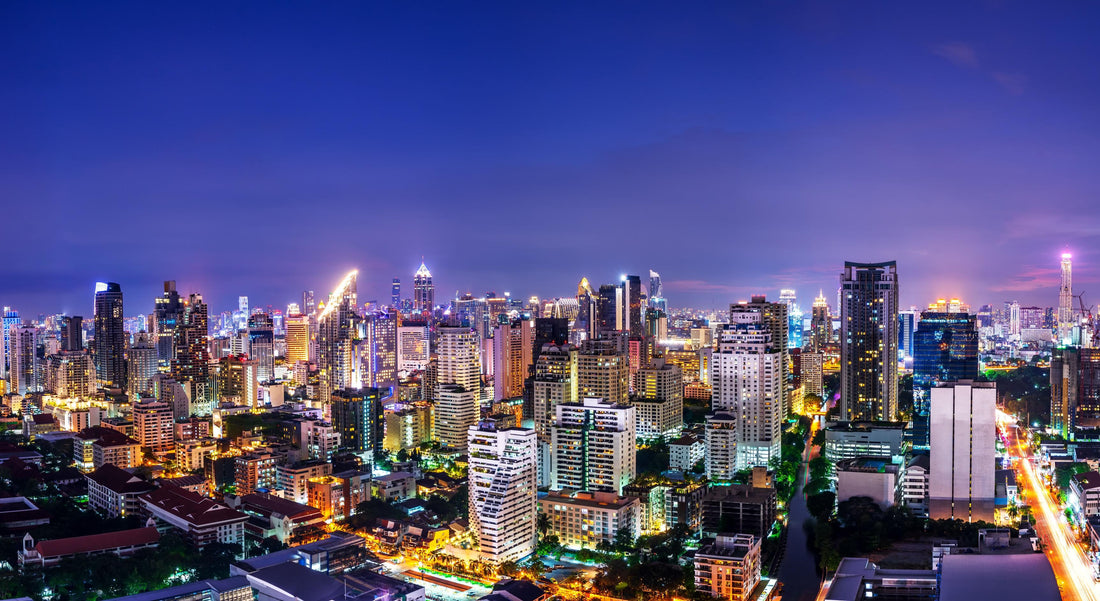
Your First Visit to Nairobi: What You Need to Know
Share
Nairobi, the vibrant capital of Kenya, offers a unique blend of urban hustle, rich culture, and natural beauty. Whether you're visiting for business, leisure, or adventure, Nairobi is sure to leave a lasting impression. If this is your first time in Nairobi, here's a guide to help you navigate the city like a pro!
1. Transportation Tips for First-Time Visitors
Getting around Nairobi can seem a little daunting, but with a few tips, you'll feel like a local in no time!
-
Public Transport: The city has a reliable matatu (minibus) system, which is affordable but can be crowded. If you choose to ride a matatu, make sure to pay attention to the route and the conductor. For convenience and comfort, consider using Uber or Bolt, which are widely available and offer a safer, more convenient experience.
-
Taxis: Traditional taxis are also available, but make sure to agree on the fare before getting into the car or use a metered taxi. Alternatively, use taxi apps for transparent pricing.
-
Walking and Cycling: For the adventurous, Nairobi has become more pedestrian-friendly, particularly around areas like Karen and Westlands. You can also rent a bike through local services to explore the city.
-
Airport Transfers: If you're arriving at Jomo Kenyatta International Airport (JKIA), taxis and ride-hailing services are available for easy transfers to your hotel. Some hotels, like Karen Plains Hotel, even offer airport pickup for a hassle-free experience.
2. Embrace Local Customs and Etiquette
Understanding the local culture and customs will ensure that you have a smooth and respectful visit to Nairobi.
-
Greetings: Kenyans are warm and friendly people. A simple handshake is a common form of greeting. If you're meeting someone older, a slight bow of the head shows respect.
-
Dress Code: Nairobi is a cosmopolitan city with diverse fashion styles. However, when visiting religious sites or rural areas, be sure to dress modestly. For urban areas like Karen, you can wear casual attire, but opt for more formal wear if you're attending business meetings or upscale venues.
-
Tipping: Tipping is appreciated but not mandatory. In restaurants, a 10% service charge is often included in the bill, but if the service was excellent, you can tip up to 10%. For taxi drivers and hotel staff, small tips are always welcome.
-
Respect for Wildlife: Nairobi is known for its rich wildlife and conservation efforts. When visiting attractions like the Nairobi National Park or Giraffe Centre, it's important to respect the animals and follow the park rules.
3. Key Attractions to Explore in Nairobi
From wildlife safaris to cultural experiences, Nairobi offers a variety of activities to suit all types of travelers. Here are some must-see attractions:
-
Nairobi National Park: A unique wildlife park located just outside the city, Nairobi National Park is home to lions, giraffes, zebras, and more, all with the city skyline in the background! It's one of the few places where you can experience a safari right next to a major city.
-
Giraffe Centre: Located in the suburb of Lang'ata, this conservation center offers an opportunity to feed and interact with endangered Rothschild giraffes. It's a great spot for families and animal lovers.
-
David Sheldrick Wildlife Trust: This elephant orphanage is a must-see for those who want to support wildlife conservation. Visitors can see baby elephants being fed and playing in the mud, while learning about the organization's work to protect endangered species.
-
Karen Blixen Museum: The former home of Danish author Karen Blixen, best known for her book Out of Africa, this museum offers a glimpse into Kenya’s colonial history and the life of one of its most famous expatriates.
-
Nairobi Railway Museum: For history buffs, this museum showcases the fascinating history of Kenya's railway system and its role in the country’s development.
-
Kazuri Beads: Located in Karen, Kazuri Beads is a local factory where you can purchase handmade ceramic beads and pottery. It's a great place to pick up souvenirs that support local artisans.
-
Bomas of Kenya: For a taste of Kenyan culture, Bomas of Kenya offers a spectacular show featuring traditional music, dance, and costumes from Kenya’s various ethnic groups.
4. What to Know About Nairobi's Weather
Nairobi enjoys a moderate climate throughout the year, thanks to its high altitude. Here's what to expect:
-
Daytime Temperatures: Nairobi's temperatures typically range from 20°C to 28°C (68°F to 82°F), making it comfortable year-round. However, it can get chilly in the evenings and early mornings, especially during the rainy seasons.
-
Rainy Seasons: Nairobi experiences two main rainy seasons—long rains (from March to May) and short rains (from October to December). It's always a good idea to pack a light jacket or sweater, as well as an umbrella or raincoat during these times.
5. Where to Stay in Nairobi
Choosing the right accommodation can make or break your visit. Nairobi offers a range of options from luxury hotels to budget stays. For a luxury and peaceful experience, consider staying at Karen Plains Hotel, where you can enjoy comfort and relaxation in the heart of Karen, close to key attractions like the Giraffe Centre and Nairobi National Park.
6. Safety Tips for Nairobi Visitors
Like any big city, Nairobi has areas that are safer than others. To ensure a smooth and safe experience, keep these tips in mind:
-
Stay in Safe Areas: Stick to well-known neighborhoods like Karen, Westlands, and Gigiri, which are safer for tourists. Avoid walking alone at night in less populated areas.
-
Avoid Flashing Valuables: While Nairobi is generally safe, it's wise not to flash expensive jewelry, cameras, or electronics in public.
-
Use Reliable Transport: Always use registered taxis or ride-hailing services like Uber for a safer transportation experience.
-
Keep Your Belongings Secure: Keep your valuables in a hotel safe and be cautious in crowded places like markets or public transport.